Shifting Toward Models of Equity
An Interview with Cherie Hill, Hope Mohr, and Karla Quintero of The Bridge Project
BY EMMALY WIEDERHOLT
Cherie Hill, Hope Mohr, and Karla Quintero are the co-directors of The Bridge Project, a Bay Area based project that creates and supports equity driven live-art that builds community and centers artists as agents of change. Here, they talk about their programming and their distributed leadership model. Additionally, Hope recently authored the book Shifting Cultural Power: Case Studies and Questions in Performance in commemoration of The Bridge Project’s 10th anniversary. She shares more about how and why she wrote the book, as well as what she hopes readers glean.
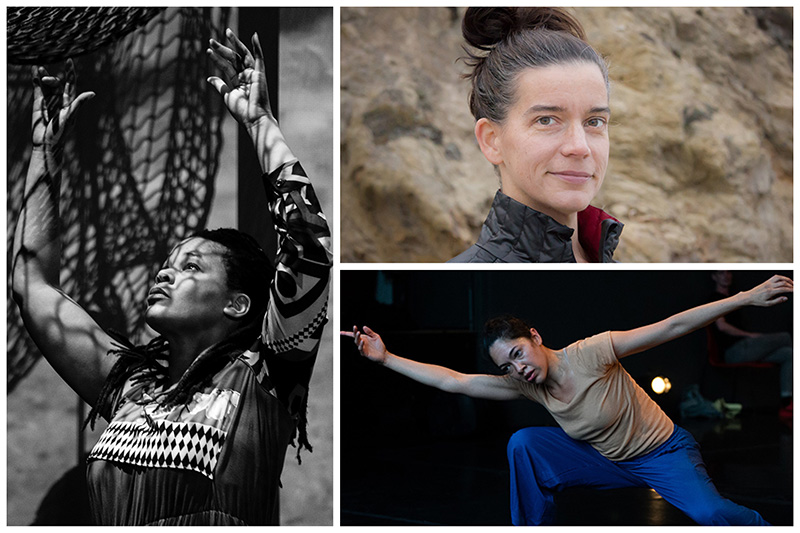
Left: Cherie Hill, photo by Robbie Sweeny, top right: Hope Mohr, photo courtesy the artist, bottom right: Karla Quintero, photo by Robbie Sweeny
~~
Hope, can you briefly tell me about yourself so readers can get a sense of where you’re coming from and how The Bridge Project got started?
Hope Mohr: I am a white choreographer and activist, and I was a professional dancer for a long time. I danced for about 10 years in New York City, and I moved back to the Bay Area where I’m from in 2006. I started Hope Mohr Dance because I was interested in finding my voice as a choreographer after being a dancer for other people for a very long time.
In 2010, I started The Bridge Project. It started as a feminist platform for shared dance programming, but it has evolved iteratively over time in response to changing social and political contexts, and has become equity focused and equity driven, and now very much has an equity and anti-racism commitment at the heart of its programming. Another notable evolution is that over the past year and a half, it has evolved into a model of distributed leadership.
Cherie and Karla, can you each share a little about yourselves and your entry into The Bridge Project?
Karla Quintero: I’m from New York City originally. I moved to the Bay Area in 2012. I’m a dancer and performing artist. I don’t really call myself a choreographer, but I collaborate with friends on projects that use dance as a tool for what we want to say. I work a lot with improvisation.
I also co-direct The Bridge Project. A lot of my work around community-building and bringing about change and more equity in the dance world happens within that framework. My first interaction with The Bridge Project was as a dancer in 2016. I performed Trisha Brown repertoire as part of a program that featured 10 multidisciplinary artists responding to and interrogating the work of Trisha Brown, in particular the piece Locus.
In 2017, after some conversations with Hope where I shared my background working in transportation advocacy and in nonprofits in New York, she asked if I wanted to join and work with Hope Mohr Dance. That’s when I began working with the organization in an administrative capacity. In 2020, we shifted to a model of distributed leadership. Even though I had weighed in on programs before, this was the first time I co-curated programming, and that has continued into today.
Cherie Hill: I moved to the Bay Area in 2003 to go to UC Berkeley, where I got my BA in Dance and Performance Studies and African American Studies. While I was there, I had the opportunity to work with some Bay Area choreographers like Joe Goode and Kathleen Hermesdorf. I toured with the Bay Area Repertory Dance Company, and I took Afro-Haitian dance at Laney College. After graduating, I worked in the area as a dance teaching artist, and eventually left to pursue an MFA at the University of Colorado. I started creating and producing my own works as a choreographer, and I started my small dance company, Cherie Hill IrieDance.
In 2012, I returned to the Bay to choreograph and work in dance education and community. I taught in Oakland Unified School District. I taught creative dance to moms and children in rehabilitation centers. I also taught at the Oakland and Berkeley Libraries. I did this for about eight years.
I applied to be the Community Engagement Residency coordinator for Hope Mohr Dance about two years ago. I came into The Bridge Project this way. The Community Engagement Residency is a big part of The Bridge Project where we have resident artists who are working on a project that directly impacts the community through dance.
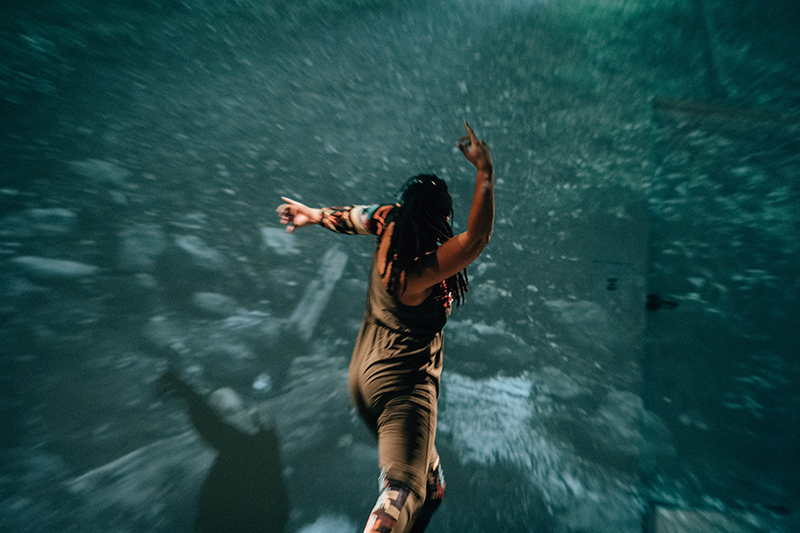
Cherie Hill, photo by Robbie Sweeny
In 2020, Hope asked Karla and me to join her as co-directors to start this distributed leadership model. And so I joined on as a co-director and also became a curator of The Bridge Project. I was excited about this because I hadn’t thought of myself as a curator and wanted to learn more. I was definitely looking forward to this focus of more cultural and racial equity. The first project I worked on with Hope and Karla was Power Shift, which was a dance festival we did around improvisation and bringing Black, Latinx, Asian, queer, and social justice activists into our programming to learn their thoughts and their experience around improvisation.
How is The Bridge Project organized with regards to its equity driven model of distributed leadership?
Karla: Right now, the way it’s organized is there are three co-directors and we all work part-time. We’re the administrative staff of the organization. When we have a program, we share the implementation duties. We discuss curatorial decisions and make them collectively. Anyone can suggest an idea for a program or an artist we want to work or partner with. Once that happens the other staff work to support that person in realizing that vision.
Because of the way we were structured before where Hope was the founder and I was the administrative manager, I took on a lot of the grant writing and marketing work. That division of labor has stuck. But if someone new were to come in, that could be potentially reinvented and we’d have a new distribution of working together.
Cherie: Another way I see equity showing up in The Bridge Project is through our curatorial efforts. Right now, we’re doing an anti-racism and dance series, and it seems like it’s a nice balance between all our interests as curators and also the community feedback around people’s interests or questions.
For example, I received some community feedback around anti-racism equity workshops in general tending to cater more toward white people and the work they need to do, the questions they have, or the fragility that surrounds them. Some of our artists who are BIPOC shared that they do not feel like these workshops are for them even though they are showing up. I’ve felt that way myself sometimes at equity workshops. So with this series we were thinking about what BIPOC folks need in this work as well as white folks. The program is an example of that. We have events for different people who are at different stages in this work. That’s an example of how we’re thinking about equity and working together day-by-day to show programming that reflects that.
What is the relationship between Hope Mohr Dance and The Bridge Project?
Hope: Hope Mohr Dance holds the 501c3 status, so legally it’s the container for The Bridge Project, but The Bridge Project has really become the core program of the organization.
In terms of how we’ve been trying to implement equity, we’ve made a few structural moves that have been really important, including moving to pay equity. All three of us are paid the same rate on an hourly basis. We also started paying dancers as employees at the same rate we pay ourselves. Those moves felt really important in terms of walking the equity talk.
Centering artists’ voices is also essential to our model of distributed leadership. It’s not just about sharing power as a staff, but also about sharing power with artists in the community. Our Community Engagement Residency is another big part of that commitment. We’re also about to launch an Artist Curatorial Council, which will be a paid group of artists who will be given 30 percent of The Bridge Project’s budget to implement their curatorial visions. Similarly, our board is 100 percent working artists.
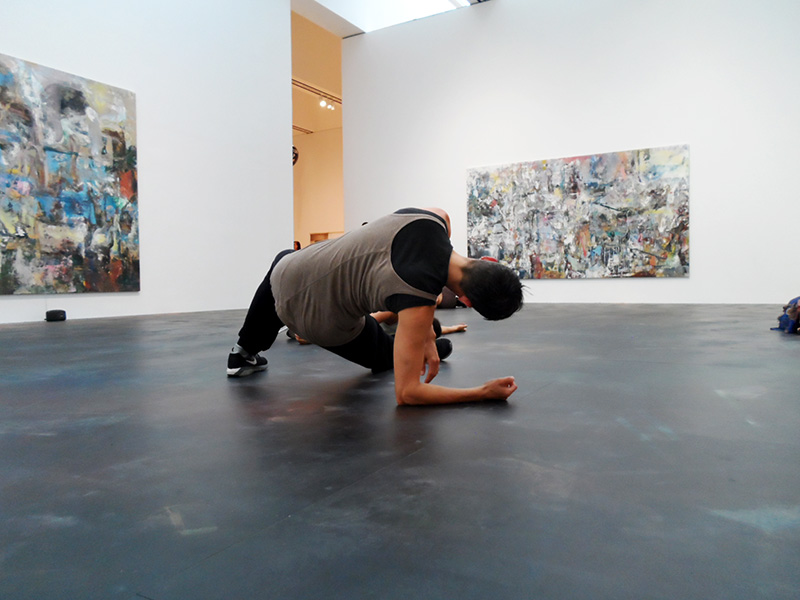
Hope Mohr, photo courtesy the artist
Hope, you recently authored a book, Shifting Cultural Power: Case Studies and Questions in Performance. Can you share what the impetus was for the book and your experience writing it?
Hope: Christy Bolingbroke at the National Center for Choreography at The University of Akron approached me in 2018 to write a book commemorating the 10th anniversary of The Bridge Project, which was in 2020. This is the first book in their book series.
I didn’t originally know what format it would take. I thought it would be an annotated archive. Out of the work of archiving the project’s history, the content started organizing itself into case studies of different programs, relationships with artists, and lessons I have learned. Out of that, a narrative emerged about the importance of decentering whiteness and implementing new models of relationship in dance.
What do you hope readers take away?
Hope: I hope readers take away that the time is now for new models in dance that are based in relationship instead of transaction. The time is now for new models based in equity. There’s so much need in the field for change. Change is so possible.
I try to emphasize in the book that making mistakes is a big part of the work. By coming forward and saying, “I made all these mistakes and this is what I learned,” I hope people will be encouraged to do the same kind of work.
What impact have you seen from The Bridge Project?
Karla: It’s hard to talk about the impact of the program in the field because I’m more intimately connected with the ways it has impacted me or other artists we partner with. I think that for the time I’ve been involved, we’ve evolved the way we partner with artists. We focus on growing our understanding of what it means to meaningfully support artists. Our partnerships with artists have a structure at the outset, like a residency or a performance opportunity, but that structure is emerging and flexible. We’re interested in developing a relationship that allows us to meet the artist where they are in their artistic trajectory. If what they need is to be in conversation with someone with more experience, whether that’s us or someone we connect them with, we facilitate that. Or maybe they just need access to resources and funding, and we’ll facilitate that.
For me, the relationships and trust we’re building with artists is the impact. A lot of artists of color haven’t had great experiences working with institutions. Many of them feel that when they are invited into an institution, it’s to check a box. The institution is not really interested in getting to know them as artists or being responsive to their work. I hope one impact of the program is that a nonprofit can have relationships with artists that are not paternalistic or transactional, and where both parties are learning, growing, and evolving.
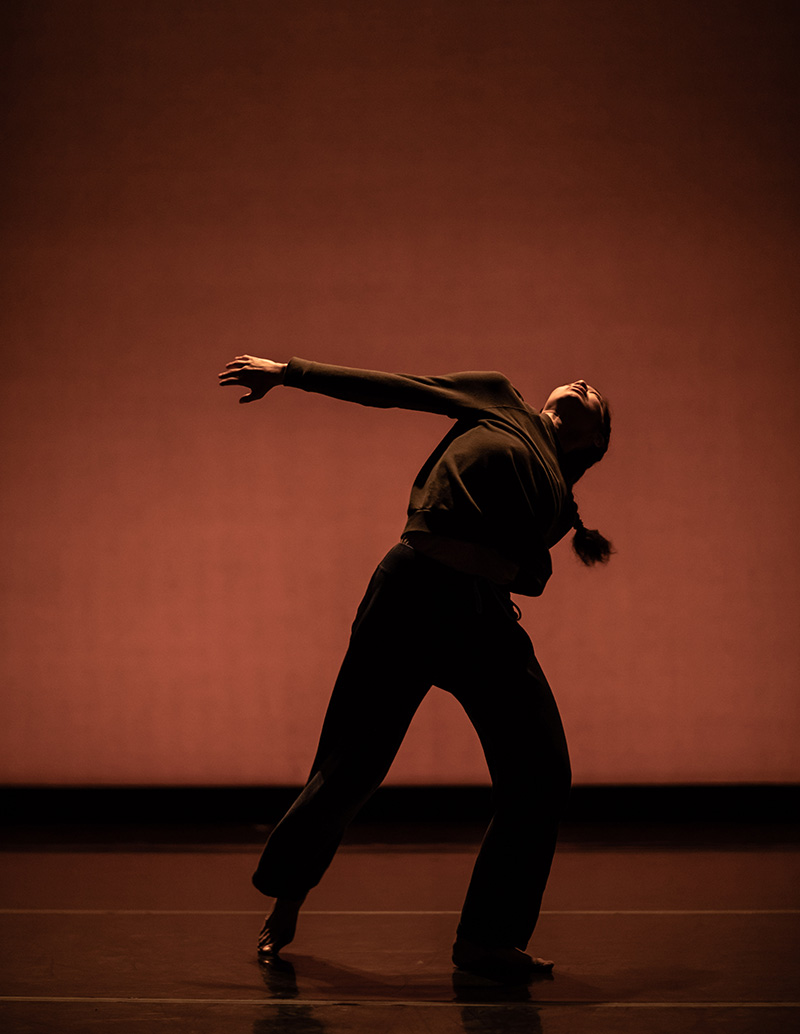
Karla Quintero, photo by Stephen Texeira
Cherie: In the past year and a half, in the field in general I’ve seen a change. People are speaking out more publicly, especially during the pandemic. I have deeply heard these cries about harm and wanting change. In my experience, Hope Mohr Dance has been called upon as an ally to artists to help them think through some of these situations. We’ve been on calls around how an organization can be restructured to be more socially or racially just. We’ve been asked to help when there’s been artists in a community in conflict who are trying to work something out and harm has been accused. Hope Mohr Dance is in the puddle, so to speak, with some of these issues.
We are moving with a field that wants to shift toward being more equitable. There are certain stakeholders who see us as a resource or see us as an ally. That’s been really cool for me to witness for the past year and a half.
Hope: I don’t know if I can speak to the impact of the program. I do feel like it has built relationships between artists, and I think in a way there is nothing more important. I’ve seen relationships last between artists who have been brought together by different Bridge Project programs. That is super rewarding. I know that word “community” is elusive, but it does come from artist-to-artist relationships.
As we all know, the field has undergone a reckoning over the past year. I’ll be very curious to see how much of those lessons stay as people rush back into production mode. I hope we can continue to hold a space for thoughtful approaches to building relationships among artists.
What’s next for The Bridge Project? Is there an upcoming project or focus you want to share more about?
Karla: I am co-curating an online bilingual media series with David Herrera and Mario Ismael Espinoza called Danzacuentos: Voz, Cuerpo y Raíces. It features five different artists of Latin American and Indigenous heritage. I’ve always been curious about media representation of dance artists, and particularly Latin American and Indigenous dance artists. It feels like their narratives are limited to stories of their struggles, or of triumph by way of being accepted into or by an elite institution. A lot of model minority narratives are tied with getting a job in a company, for example. As a series co-curator, I wanted to see if we could profile artists in a way that they felt like they were driving their own narrative and were able to share what they wanted about their work, lives, process, politics, identities, and heritage, and how these all intersect. I wanted to create a space where artists could feel safe to share and where we could invite people to listen without preconceived notions or biases. It’s the first time we’re co-curating something like this and it’s exciting; we’re learning a lot about how you make change in the media happen. The series website, danzacuentos.org, will include interviews with each of the artists. And then each of the artists contributed different artifacts from their creative processes: images, writing, video, playlists. We’re having a live event where people can ask the artists questions on Zoom on September 17th at 5pm Pacific.
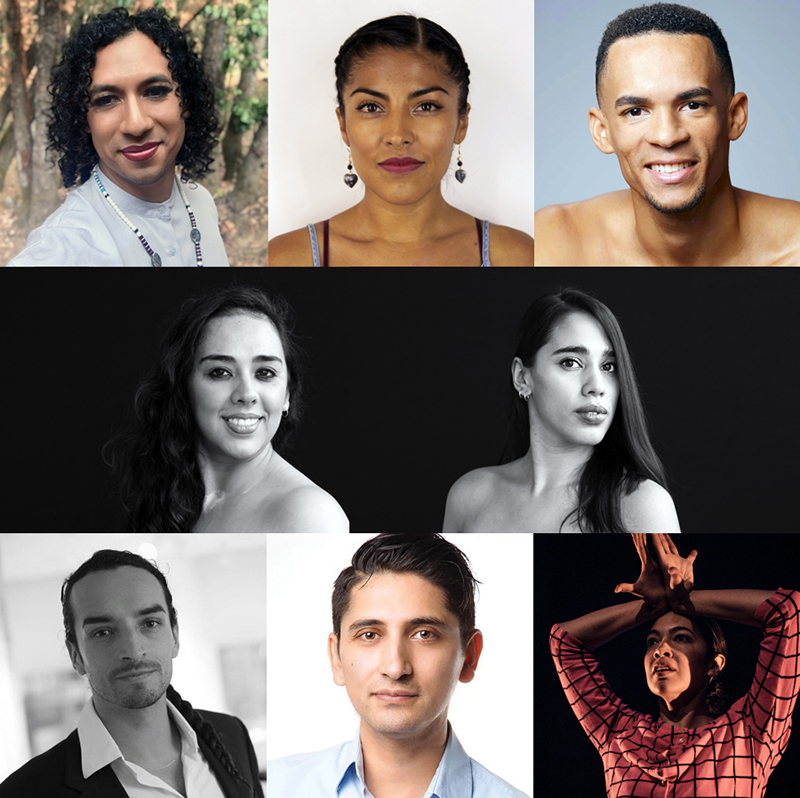
Danzacuentos artists:
Row 1: Snowflake Calvert, Cinthia Pérez Navarro, Lyvan Verdecia
Row 2: Dulce Escobedo, Marianna Escobedo
Row 3: Co-curators Mario Ismael Espinoza, David Herrera, Karla Quintero
~~
To learn more about The Bridge Project, visit www.bridgeproject.art.
To order Hope’s book, Shifting Culture Power: Case Studies and Questions in Performance, visit www.nccakron.org/books.
